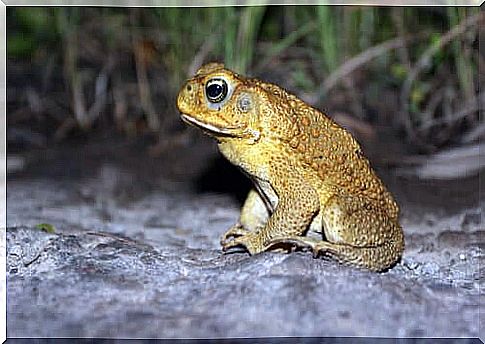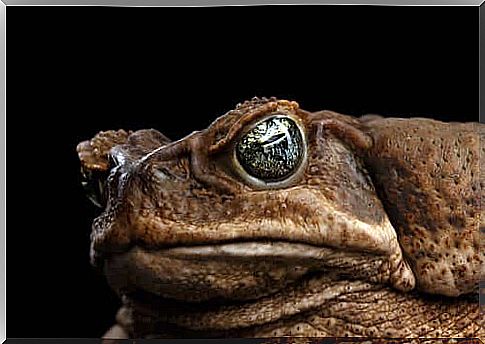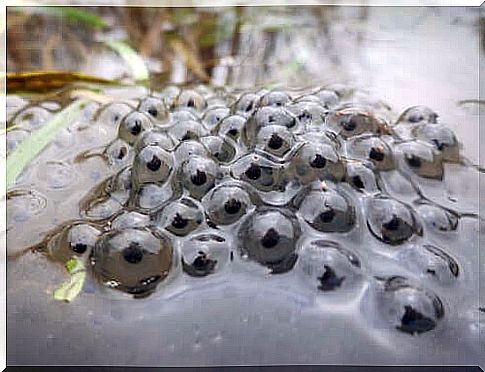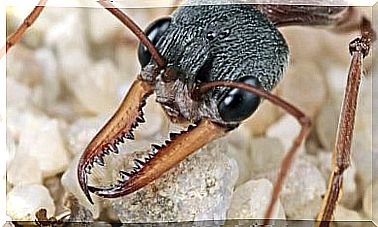Curiosities About The Cane Toad

The Cane Toad, known in the scientific community as Rhinella marina , is an anuran amphibian belonging to the Bufonidae family . Its large size and toxicity are not the only defining features.
Morphological characteristics of the Cane Toad
This amphibian stands out for its large dimensions, as it can exceed 15 centimeters. His skin is dry and warty, with a series of bumps on the front of his head.
With regard to its tonality, there are from specimens that have more brown tones to those that have reddish or tanned colors, with a variable pattern of spots. Generally, the belly is lighter.
After reaching maturity, the Cane Toad is characterized by having large parathyroid glands arranged from the anterior side of the eardrum to the middle of the back, which indicates less toxicity in young specimens. Also, like other nocturnal species, their pupils are horizontal and golden.

Reproduction, feeding and behavior
When it’s time to reproduce, the males are temporarily or permanently available in the vicinity of the springs, in order to try to attract the attention of the females. For this, they emit sound vibrations for long periods of time.
Copulation, known as amplexus , occurs when the male surrounds the female beneath her forelegs, at which point the female lays unfertilized eggs waiting for the male sperm to fertilize them. The end of the reproductive act takes place in water.
The eggs, which only have the protection of a mucous layer, are deposited through gelatinous filaments in regions with vegetation nearby. These litters can surpass 30,000 eggs and their hatching depends on the water temperature, being able to elongate up to a maximum of one week. Thereafter, the development of tadpoles varies between 12 and 60 days.

The Cane Toad usually feeds at night, in regions with dense vegetation, and consumes a wide variety of insects: ants, bedbugs, beetles and earwigs are its main prey.
However, unlike other anurans, they are characterized by being opportunistic predators, which can thus feed on vegetables, carrion and other discarded waste.
In captures, in addition to the fundamental role that vision plays, identifying prey by their movements, this amphibian relies on its developed sense of smell. In addition, their locomotion is characterized by their short and quick jumps, and in periods of extreme drought or low temperature, they remain inactive and spend most of their time underground.
In threatened situations, your parathyroid glands produce a viscous, whitish alkaloid substance known as bufotoxin. This substance is characterized by being cardioactive, that is, it can cause spasms, vomiting, respiratory problems, paralysis in the extremities and even death.
Habitat and state of conservation
The original distribution of the Cane Toad extends from the southern Rio Grande Valley of Texas to central Amazonia and eastern Peru. It was later introduced to the Caribbean islands, south Florida, Hawaii and the east coast of Australia.
The development and impact of this amphibian on local flora and fauna in non-endemic places was a reason for it to be considered one of the 100 most harmful invasive species in the world.
Currently, the International Union for the Conservation of Nature (IUCN) establishes, through the so-called Red List of Endangered Species, that the conservation status of the Cane Toad is of “low concern”.







